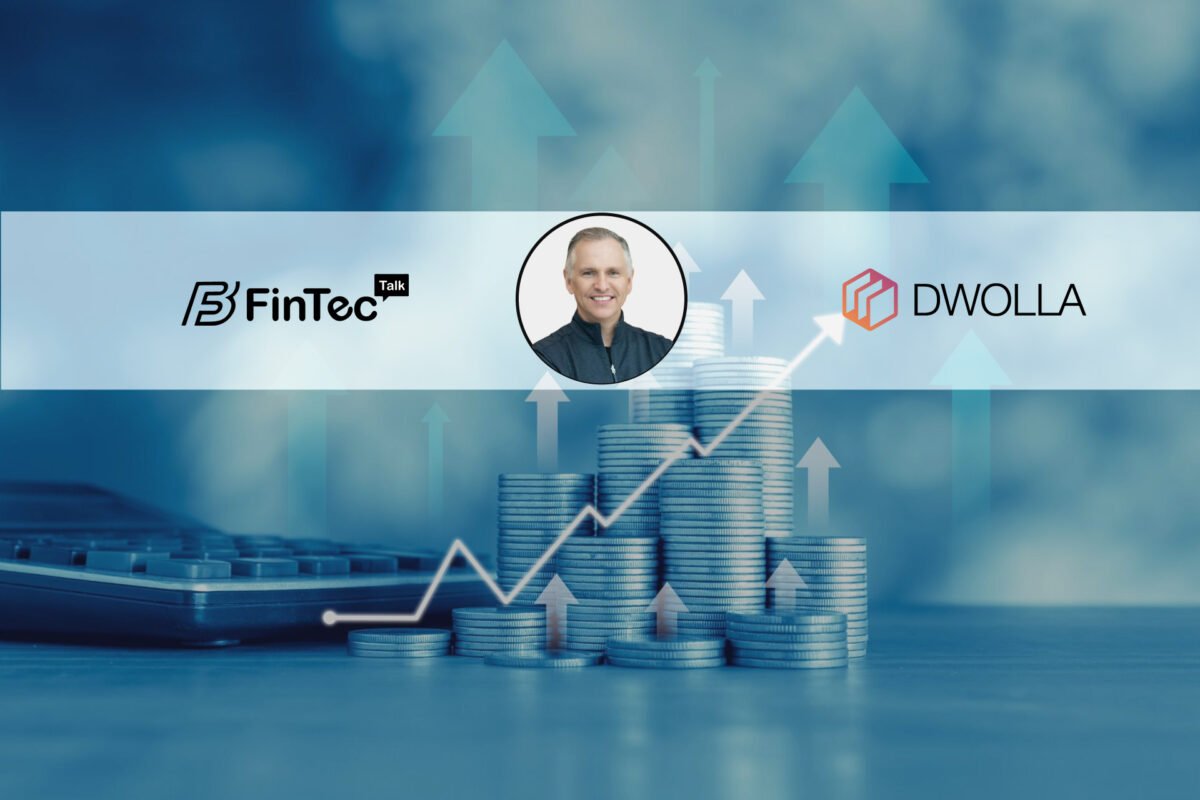Small businesses are developing and so should the ease of digital payments. Ryan Cantor, Chief Product Officer at Thryv highlights Thryv’s future endeavors regarding SMEs, payment trends for 2022, and much more.
1. What aspects of Product Management do you find the most exciting? How do you stay user-focused?
I think it starts with the personal decision to talk to users directly. Not just the uber happy ones, but the ones struggling. Second, when talking to users, don’t just talk about the product and how they use it. That’s mechanical. Instead, invest energy in understanding their business, how it runs, and what challenges they face. Focusing on the mechanical helps you fix the product of today, while understanding their business lets you build the product of tomorrow.
As product leader, it is then incumbent on me to ensure my entire product team is equally accountable. For this reason, the product team oversees Tier 3 tech support. These are failures in the product, and the pain failures cause, force a better product. We also have a dedicated product success team that represents the voice of the customer, champions beta roll-outs, and more. The most exciting aspect of product management, for me, is adoption. Anyone can build a product. Seeing users engage, adopt and get benefits from it – that is my vice. I love it and I am totally addicted.
2. Thryv recently announced it’s targeting SaaS revenue of $1 billion by 2027 and $4 billion by 2032. How do you think it will impact small businesses in the long run?
Thryv is positioned to create long-term value for small businesses. We like to call this path forward the “Decade of Small- to Medium- Businesses (SMBs) SaaS”. Our announcement is a step towards growing and adapting to our customers’ needs and equipping them with tools to help their businesses thrive at a higher level of quality by: having the freedom of mobility, a seamless solution to simplify operations and the ease of an ‘office in their pocket’ for wherever and whenever they do business. We have a product roadmap filled with innovation and opportunities for our SMB Platform to deliver faster time-to-value results and be a differentiator for SMBs to compete against enterprise grade competition. That’s the impact we want to have in the long run.
3. What according to you are the top three digital payment trends that everyone needs to be aware of?
Transparency: SMBs want, and need, to know what their cost of receiving payments is at all times. Over recent years, too many businesses have hidden this in statements or other ways, and it leaves a bad taste in the mouths of their customers. Control: The step-sibling to transparency. It’s great that an SMB knows what’s going on, but now they have to be able to control it. Settings, limits and rules are all things they’ll need to take into consideration. Who can do what? What are the controls an owner can put in place to optimize their results? Limits on credit card payment size, convenience fees, etc., serve as an initial answer.
Convenience: It just needs to work. It needs to work for the SMB, and it needs to work for consumers. Should a few consumers complain, the owner will be forced to look for a new solution.
Chargebacks and disputes are real, and if you read any app reviews of major providers, you’ll see frozen funds, delays of funding, and other issues in real-time. There are real things that happen to reduce risk, but, in the end, being convenient to work with means bringing your users along with clarity.
4. What is the impetus behind the Sensis acquisition and how do you plan to capture Australian markets?
Sensis was a tremendously successful company prior to the acquisition in early 2021. With similar histories and the same trajectory, it made perfect sense to combine forces under the Thryv brand as we were further along in our journey. This acquisition brought the Thryv platform to Australian business owners, unlocking 100k small business relationships along with hundreds of local experts who each have relationships with these businesses. Putting all that together with Thryv’s platform meant Thryv had a unique and highly profitable way to enter the Australian market.
5. Could you tell us more about Thryv’s Payment survey? We would like to know the intent behind planning the survey and how did it help Thryv’s future endeavors.
In a soon-to-be post-pandemic world, it was important for Thryv to understand consumers’ payment preferences and how they impact loyalty and purchasing decisions. What we had hypothesized, prior to the study, was a lag in digital payment adoptions versus consumer preferences. The data came back to confirm Thryv’s hypothesis. It told us that good service alone doesn’t keep consumers loyal. If a business is hard to pay, consumers will start looking at their competitors. And once they start looking, consumers will find one that is easier to pay – and they’ll switch for the convenience. Now our goal is to package this data and bring it to SMBs to help them understand why it isn’t a choice to adopt easy and convenient payment methods. It’s a business essential. Then, we work with them within their comfort zone to configure ThryvPay around how they want to operate — implementing certain limits and controls that make sense for their business.
ThryvPay shows them how easy it can be for not only them but their customers as well. A win/win.
6. Can you brief us on the ThryvPay payment processor? What makes it stand out from others in the market?
ThryvPay was specifically built for service-based small businesses. Not coffee shops or cafes. Not enterprises. There is a distinct difference in how these businesses accept and process payments. One thing that helps ThryvPay stand out is how we provide users the ability to process a low relative number of transactions with the higher average ticket size. Some processors who specialize in a high volume of transactions but lower cost per transaction can tease out extremely low percentage rates, but hidden in there are extremely high per-transaction fees. These high volumes of transactions gouge the business owner. They build their models and rates around those types of businesses (high volume/low ticket total). If a service-based business uses this type of processor, they see money holds, delays in fundS availability, rate increases, and other tactics to solve the profitability problem for the processor or get the SMB to quit.
ThryvPay launched with the intent to enable SMBs in making the choice to accept credit cards, ACH — or both, giving the business the ability to place limits on how large a credit card transaction
with which they were comfortable. To abide by the law and help SMBs lawfully impose convenience fees, ThryvPay offers the convenience of choosing a credit card over another payment option online and collecting a fixed fee for that convenience. This helps the business offset their higher credit card processing costs.
ThryvPay integrated with Plaid — including it for free — so SMBs accepting Automated Clearing House (ACH) payments know, in real-time, whether funds are available in the account before they leave the job site. Just accepting a check doesn’t provide that level of assurance.
7. What steps should small businesses take in order to scale up their revenue?
The first step to scaling your business — ensure it’s scalable. Ask yourself: Does it all break if you double your volume? Is it all in your head? If a specific employee leaves, what happens? Is all your company data sitting in someone’s email inbox or text messages?
It’s 2022. The market is only getting faster and more convenient every year. It is true that every SMB owner can choose to run their business in any way they want, but it doesn’t mean customers will then choose to work with your business. Customers always win. Convenience always wins. Next, focus on delivering an excellent product/service AND deliver an exceptional experience for your customers. Do this, and your business will grow faster than you can imagine. No one trusts sales or marketing anymore. Referrals now come from customers who received excellent and convenient service and a solid service/product, and they will tell others. People listen to those trusted referrals.
8. Can you take us through your typical product development plans and roadmap — what are some tips you’d share as one product developer to another?
Thryv thinks about product development in two ways:
1. Incremental improvements
2. Epics
Incremental improvements come from users voting on improvements and asking for tweaks or other items. Thryv launched an in-app platform that enables its users to ask for features, vote on these requests, and requires users with multiple requests to prioritize them. This data is consumed directly by the product leaders who use it to take action. We communicate with every client who voted on a feature when we start working on it. We reach out to them to learn more about what they want it to do and we notify them when we launch it. This invites them into the entire process —and they love it. No software is perfect, but Thryv’s users see the improvements happening live and in real-time. Epics are the longer-term strategy. Sometimes this can be a hard combination of feature requests that warrant a much bigger project, but it is usually focused on the overall strategic direction of the platform. A product exists to solve a problem. So decisions around our epics are all catered around solving a particular problem.
An example of a recent Epic product development was payments. As part of this epic, we launched: Split Payment Support, two additional 3rd-party payment integrations, six accounting app integrations, deposit functionality, packages, improvements to the user interface, signatures on estimates and, of course, ThryvPay. The epic was an 18-month project with a lot of research and energy behind it, but the results were more than worth it.
9. What are your thoughts on the global state of fintech and digital payments today and what are some innovations that users can expect?
Well, I think there are a lot of micro-trends. Some of the largest being moving traditionally delayed financial experiences into “real-time.” You can buy stock instantly in Robinhood. You can buy bitcoin instantly. You can now interact with your bank account and pay bills faster and faster. Payroll is available the same day on a bank card and merchant funds are loaded and ready quicker than ever.
The other larger micro-trend is what I like to call “one click”. I fully blame Amazon for this. They’ve trained everyone that you can (dangerously) buy anything with a single click. Consumers want to pay businesses now in one click; schedule in one click; pay bills with one click. Lastly, the trend Thryv is marching toward is the super app concept. For us, our super app is for SMBs. One place to get paid, pay others, manage expenses and more — thus combining what used to be a processor, your bank, and other apps into a single interface to reduce friction.
10. Let us in on Thryv’s work culture. How would you describe your team?
I can answer this for not just my team but the entire company. At Thryv, we have a set of core values that aren’t just printed on things or spoken but embraced and lived daily. One I love is: “Making money is a by-product of helping people.” Focusing on helping our users should reward us. Focusing on helping your fellow team members should reward you. In the end, we are all people working together towards something great. We need to build products that work, that deliver real value.
Success isn’t measured by a number of meetings or a number of releases. It’s measured on adoption, churn and other factors that tell us, without a doubt, we’re helping people.
Thryv is now a work from anywhere company, which provides a great deal of autonomy and flexibility. Accountability is embraced because people are empowered and provided the tools and support to do their work at a very high level.
11. What is your life motto? What are your favorite recommendations for books, movies, series, or podcasts?
I’m not sure I’ve ever been asked this. For me personally, my life motto is to live your life, be willing to put in the work. No shortcuts. Life isn’t a spectator sport. In my professional career, I’ve worked alongside peers with impressive resumes and fancy colleges. I’ve also seen the same when recruiting people. In each scenario, the person willing to do the work was more successful. While that doesn’t mean working 80 hours a week, let’s not lie, you will have 80-hour weeks sometimes. It’s about being disciplined. Every hour is sacred. Your time is sacred. Are you consuming relevant information or is this busy work?
If you put in the work and focus on helping people, rewards and success come. For a book, Freakonomics by Steven Levitt and Stephen Dubner. Most things you do in business can usually be boiled down to psychology. Psychology of users, employees, bosses, etc. That book stuck with me, and I find myself being able to utilize learning in random places pretty routinely. The other one I have read over and over again is the Five Dysfunctions of a Team. Speaks to trust, accountability and a variety of other core ways to operate. Professionally, I expand the word team to include customers, etc. It helps create a great framework around how to interact in general. I also say people can love me or hate me; they may agree with me or not, but I’ll be consistent and fair. Over time that will build trust, and it’s the core bedrock for everything else you want to accomplish.




